Original Author: WILLIAM M. PEASTER
Original Translation: Deep Tide TechFlow
The Parallel trading card game (The Parallel trading card game, TCG), also known as Parallel, is an early star in the field of cryptocurrency games, where players can control unique factions to compete in strategic science fiction battles.
Therefore, the game will launch its open beta version on Thursday, February 29th.
In other words, if you haven't played Parallel before, now is a good time to delve into the basics of the game and start your first match.
This article will cover the main basics of this game to prepare you for duels and earn $PRIME, which recently set a new high of over $15!
Parallel Beginner's Guide
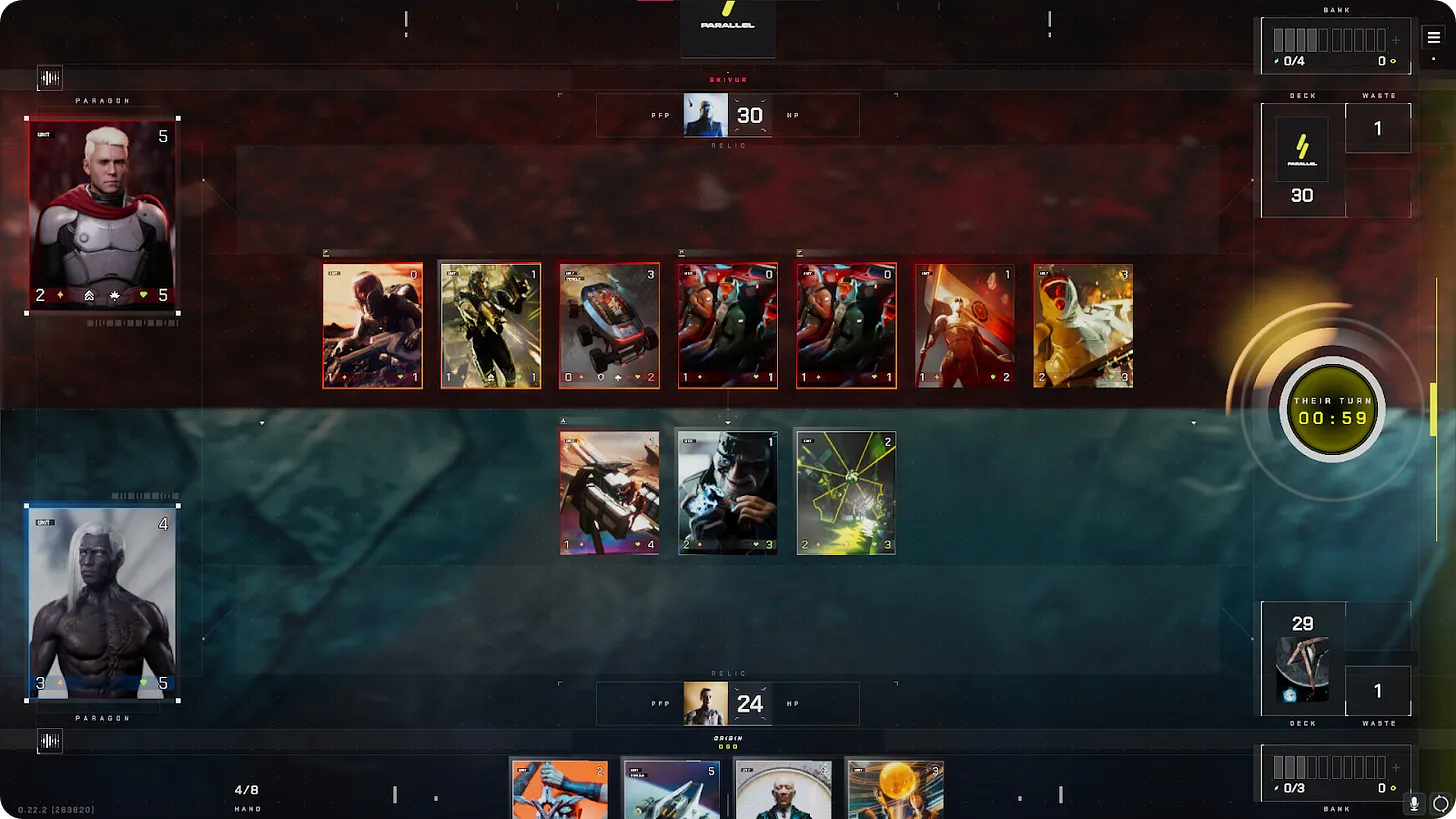
Game Basics
Parallel is a strategic trading card game where players compete to reduce their opponent's life points from 30 to 0.
The game is played with a deck of 40 cards, and players start with 5 cards in their hand. However, through drawing cards, the maximum hand size can reach 8 cards at any time. Before the Parallel match starts, players have the option to mulligan, where they can shuffle any number of cards back into the deck and draw the same number of cards.
Different Game Modes
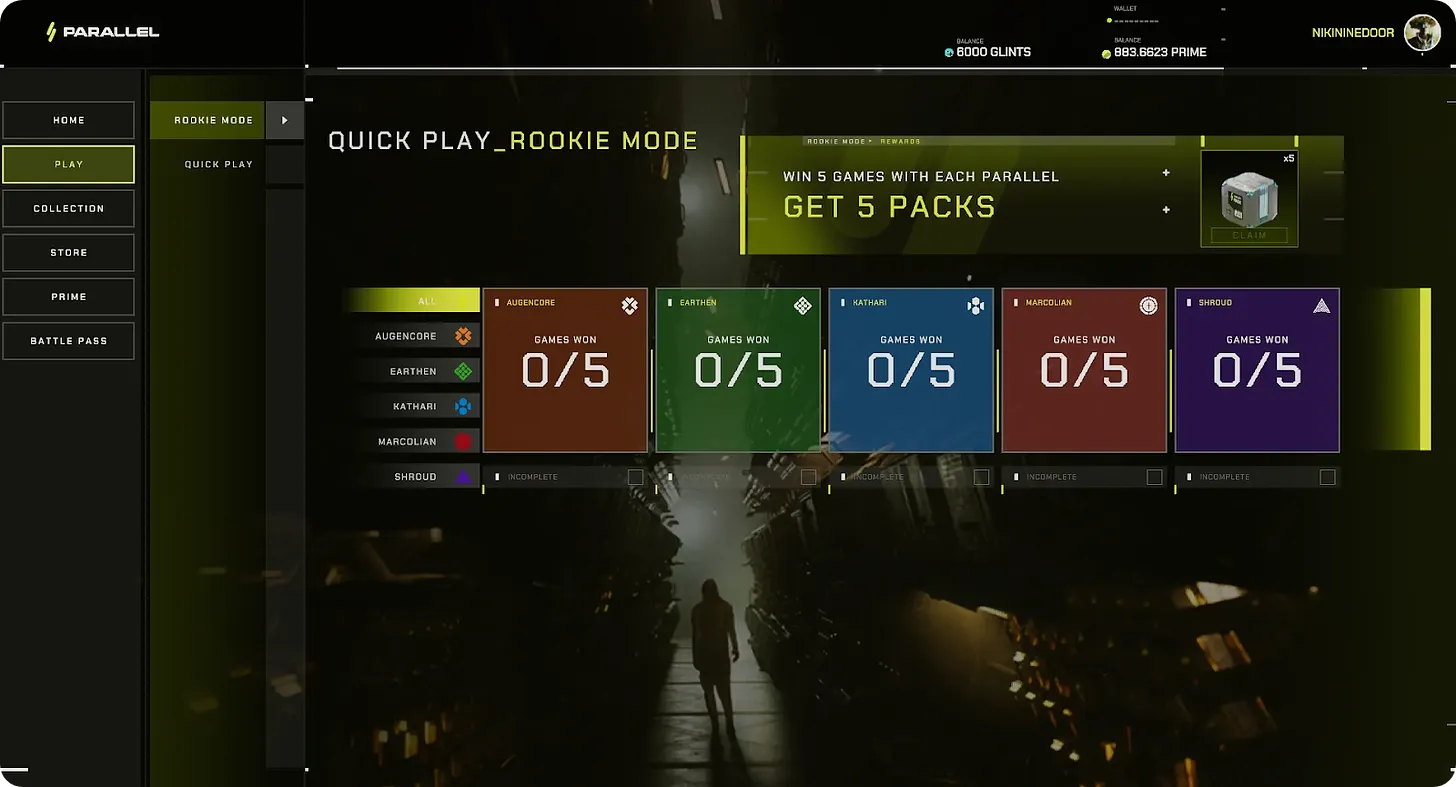
The open beta version of Parallel offers different game modes to meet the needs of players at different stages:
Beginner Mode
Designed for new players, this mode starts after completing the tutorial. Players start with one of the three Paragons, which are the leading units with passive deck effects, unlocking one from each of the five parallel factions: Augencore, Earden, Kathari, Marcolian, and The Shroud.
The goal here is to win with each Parallel and unlock rewards along the way. The rewards for the first five wins with each Parallel include new Paragon, Common and Legendary Illusion (non-NFT) card packs, as well as an Apparition Starter Deck. Winning all 25 matches with all Parallels will reward additional Illusion packs (Apparition Packs), which can be used to supplement your base (NFT) cards.
AI Mode and Non-Ranked Mode
After unlocking your first Starter Deck, these modes become available. AI Mode is great for testing different cards and combinations without affecting your ranking or win-loss ratio. Non-Ranked Mode provides a similar non-competitive environment where players can freely experiment with their decks.
Ranked Mode
For players ready to compete and earn rankings, Ranked Mode involves playing 10 placement matches to determine your initial rank. During and after this trial period, the mode allows players to earn $PRIME, the core currency in the Parallel game, based on victories.
It's important to note that the amount of $PRIME earned from ranking victories can increase with higher ranks and is influenced by factors such as the number of NFT cards held in victories, win streaks, and holding Parallel avatars.
Main Game Mechanics
In Parallel, a player's turn consists of two main phases:
Draw Phase: In this initial sequence, the player draws a card from their deck.
Turn Phase: During this period, the player can play cards from their hand, attack with units, and use skills. The player can perform any number of actions based on their available energy.
Speaking of cards, there are four types of basic cards to be aware of:
Unit Cards: These cards represent creatures or characters that battle for the player. They have attack and health statistics.
Effect Cards: These cards have immediate effects when played but do not remain on the field.
Relic Cards: These cards provide continuous effects or abilities and can influence the game in various ways.
Upgrade Cards: Upgrades attached to unit cards that enhance their abilities.
After mastering the basics of cards and turns, it's important to understand the main game concepts you encounter in battles. These concepts include:
Energy: Used to play cards. Each card has an energy cost
Storage: A strategy where players hold cards for future turns
Recruit: Triggered when a card is played and has specific effects
Pacifist: Units with this trait cannot attack
Shield: Represents protection from initial damage
Recycle - Allows players to retrieve cards from the discard pile.
In summary, these main mechanics lead to some basic strategies.
For example, building a balanced deck is key. To be competitive, your deck should include units, relics, effects, and upgrade cards to handle different situations. Energy management is also important, as you need to keep track of your energy level and plan your moves and cards accordingly.
In addition, storing cards and placing your units strategically are crucial to success. The storage mechanic allows you to prepare for future turns, ensuring you have the right cards when needed, and deciding when to attack or defend based on the opponent's field can determine the outcome of your battles.
As you gain more experience with Parallel gameplay, you'll notice that your game sense improves, and you'll find yourself better at predicting the opponent's moves and combining powerful card combinations. So keep practicing, and you'll eventually find your stride.
If you need to review any of the above concepts in the future, be sure to check out the Parallel FAQ, Parallel cheatsheet, or Parallel game manual.
Building and managing Parallel decks
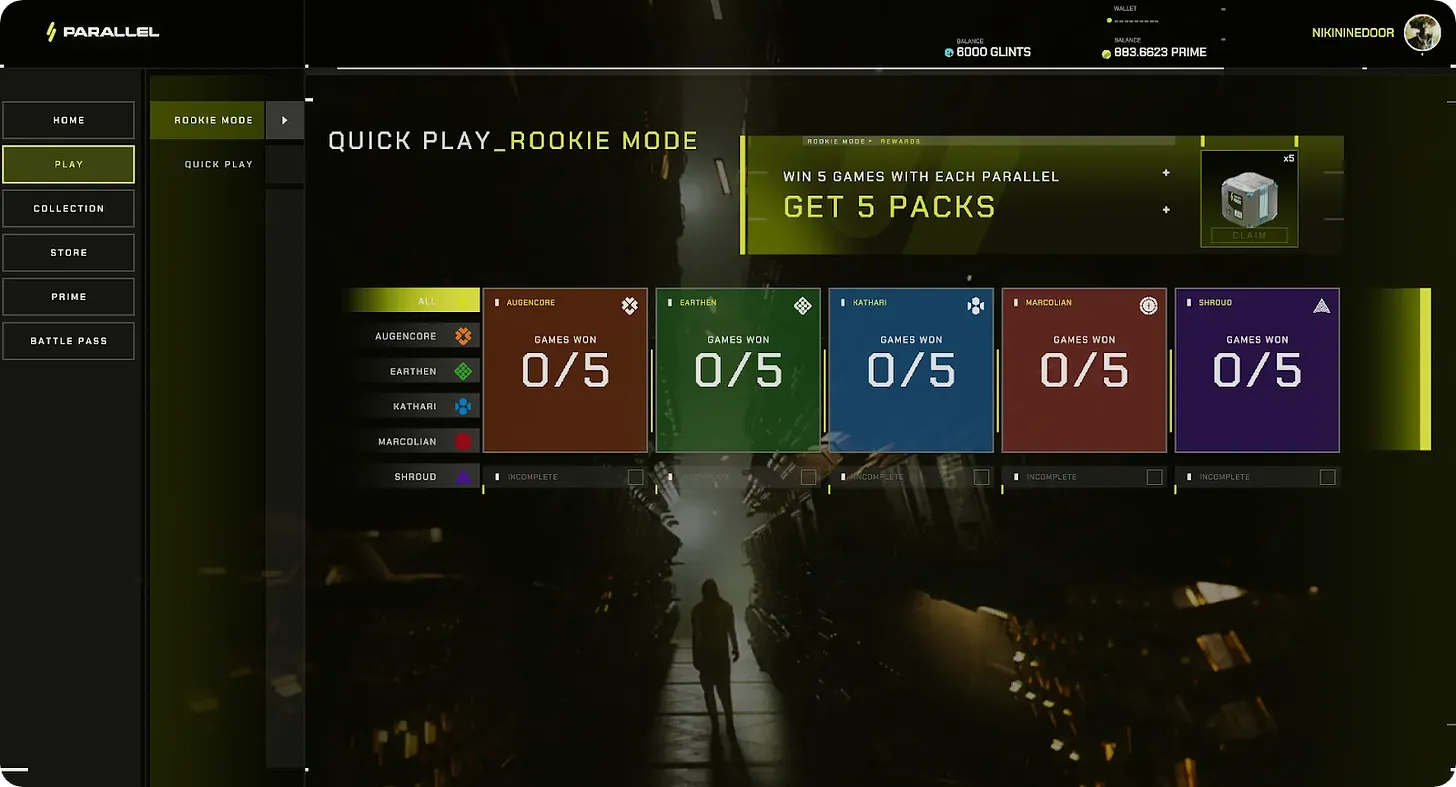
You don't need to purchase any Parallel NFT cards to start playing Parallel, as you will receive a starter deck by completing the game's tutorial campaign.
However, after that, you will need to win or acquire additional cards to enhance your abilities or create multiple decks.
The cards in Parallel are associated with the Ethereum and Base Layer 2 (L2) scaling solutions of the OpenSea secondary market, which allows the former's cards to be "echoed" to the latter. In other words, purchasing cards through OpenSea is a direct way to obtain the assets you want for deck building. Soon, you can also rent cards through organizations like ParagonsDAO.
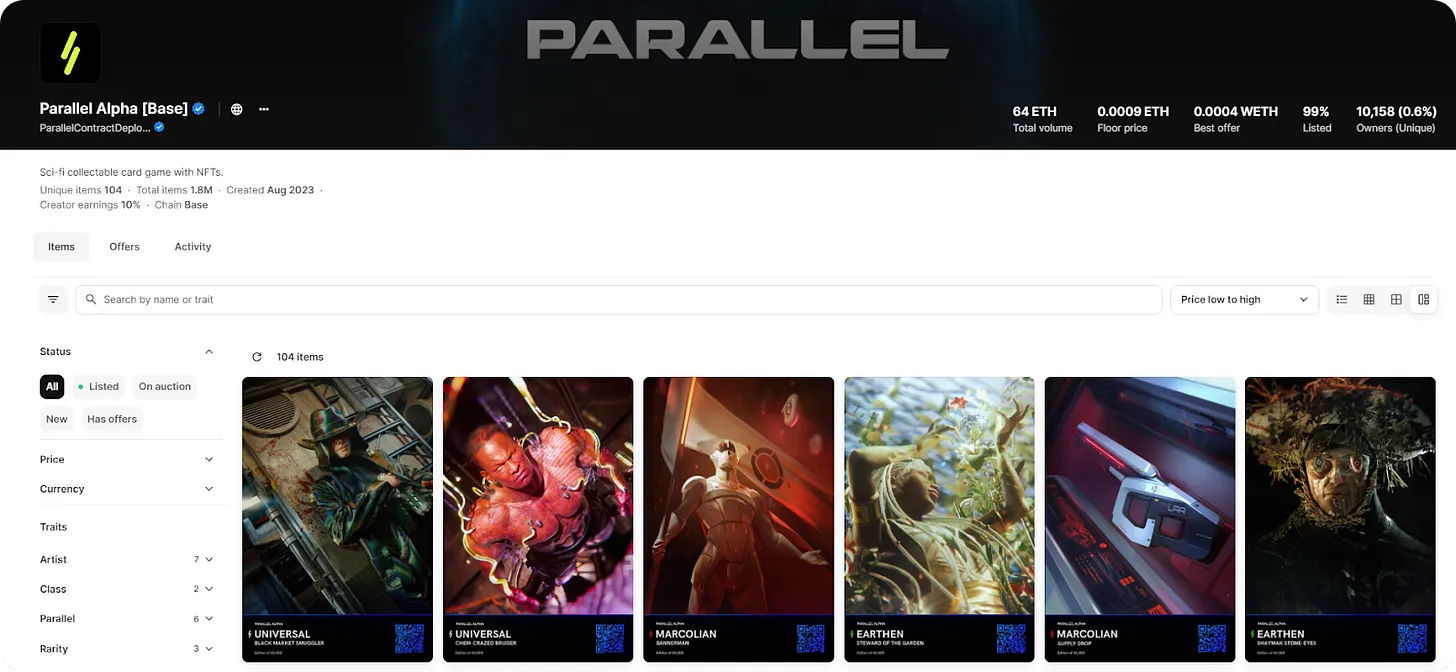
First, you can focus on one Parallel faction and try to build a deck for it. Each of the five factions has its own strengths. Here is a brief summary of each faction:
Augencore: specializes in adding enhancements to units to boost their abilities
Earthen: emphasizes control of the battlefield and strategic use of defensive units
Kathari: excels in generating clones and has a control-oriented playing style
Marcolian: Focuses on an aggressive playstyle, aiming to quickly inflict damage to the opponent's life
The Shroud: Aims to exile units, removing them from the game to prevent the opponent from utilizing their full resources
As you delve deeper into this, you can use the Parallel Cards main dashboard, Priming Resource Manager by ParagonsDAO, or app.paralleldecks.xyz and other resources to identify, trade, and manage your cards. Parallel has also just released boxes and folders for better organization of your decks.
$PRIME Overview
$PRIME is the core utility token of Parallel, which includes Parallel TCG and the upcoming AI-driven Parallel Colony game.
Players can earn $PRIME by winning ranked matches in Parallel TCG. As mentioned earlier, the amount of $PRIME earned per win is influenced by various factors such as the player's matchmaking rank and win streaks.
Attention, currently here is a daily limit, so players can earn $ PRIME from their best 5 victories each day. On average, if you win 5 matches a day, you will earn just over 10 $ PRIME in a month, which is approximately $150 at the current exchange rate. Very nice!
After you have your $ PRIME earnings, you can hold, sell them for other assets like ETH, or spend them on various Sinks within the Parallel ecosystem, which are products and services. Some of these Sinks include Artigraphs (limited edition, signed parallel cards), Glints (in-game currency for non-NFT purchases), and Cosmetics (equippable skins and expressions).
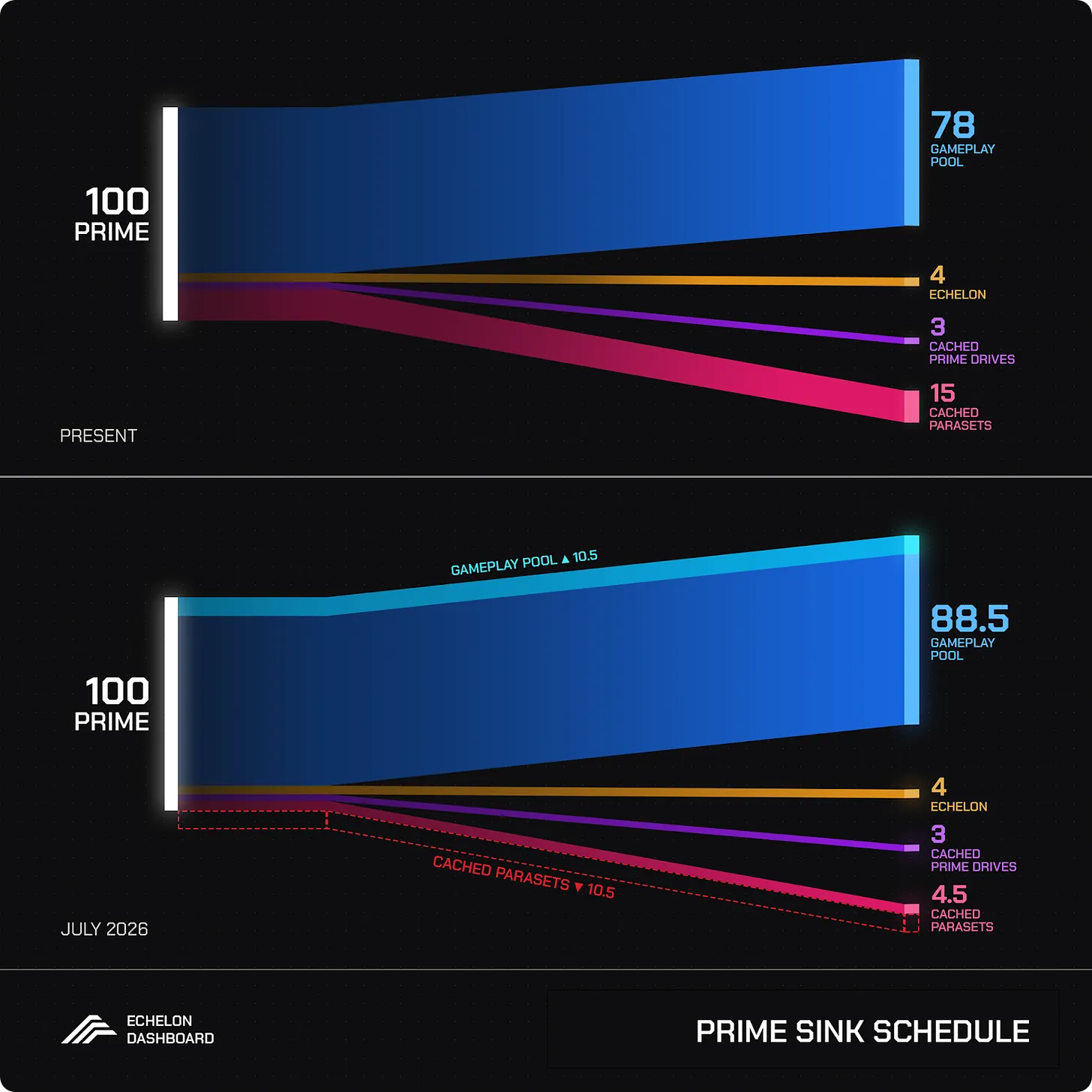
When $ PRIME is spent on Sinks, a portion of it is reallocated to various components within the ecosystem, such as the game gameplay pool, Sink creators, etc. This process aims to promote the continuous flow of $ PRIME back into the game economy and over time create a sustainable player earning model.
Last
This Thursday, anyone will be able to download the Parallel game launcher and start playing the open beta.
This opening marks the beginning of a new era for Parallel, allowing us to glimpse into the future of digital collectibles and game economy. In fact, while in my opinion, the gameplay of Parallel itself is both profound and interesting, one of the most exciting aspects is how Parallel carefully integrates NFTs and $ PRIME tokens into its ecosystem.
This dynamic not only makes players participants, but true stakeholders. As Parallel continues to grow, these players will be in a favorable position to benefit from the game's ever-growing economy, including its unique market dynamics, trading strategies, and investment opportunities.
Looking further ahead, the expansion of Parallel, including Parallel Colony and other potential future games, also foretells a vibrant ecosystem where $PRIME will serve as the lifeblood connecting and fostering diverse gaming experiences. This interconnectedness can provide a blueprint for games that not only share a common currency, but also contribute to the shared economy and narrative of the ecosystem.
In the end, the true success of Parallel and its model will depend on the level of engagement from its community, the balance of its player earning mechanisms, and the ongoing development of its ecosystem. If it continues to build on these things, groundbreaking success may be just around the corner!